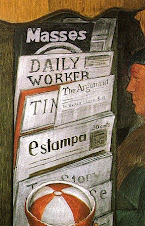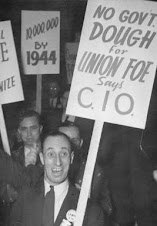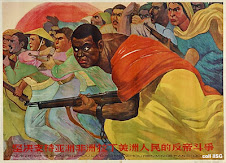
Arthur Scargill, leader of the National Miners Union in the United Kingdom. He led the British Miners Strike of 1984-85. Currently heads the Socialist Labour Party and advocates Marxism-Leninism.
All too often miners, and indeed other trade unionists, underestimate the economic strength they have.
There's a feeling that strength is determined by the size of a union. That clearly is nonsense.
Yet what you need is not marches, demonstrations, rallies or wide associations, all of them are important. What you need is direct action. The sooner people understand that, the sooner we'll begin to change things.
You may see the emergence of a new political party from the body of the trade union movement which represents a very clear-cut socialist alternative policy and which gives expression to the views of the trade union movement in parliament.

William Z. Foster, leader of the AFL steel workers strike in 1919, and founder of the Steel Worker Organizing Committee (SWOC) within the CIO. Also a high ranking member of the Communist Party, USA.
Employers in the big industries will not permit their workers to peacefully organize and then negotiate trade union agreements. They will and do fight all along the line, against the organization of the unions, and against conceding their demands.
In organizing campaigns and strikes the workers should make demands not only upon the employers but also upon the reactionary bureaucrats where these control the unions. This is a very important consideration for the strike strategist to bear in mind.
In view of the universal lessons to the contrary, it is a crime to teach the workers that they can defeat such a ruthless capitalist class without open struggle.
The workers have to fight desperately for the very right to live. Becoming ever more radicalized, they make this fight with constantly sharpening militancy. Even the smallest issues readily blaze into great conflagrations.
The capitalists, in the midst of the sharpening general crisis of capitalism, are determined to force the living standards of American toilers down to European levels, or lower. The workers will respond to this offensive by increasing class consciousness and mass struggle.
The encouraging signs are those which show the changed attitude of the radicals towards the trade unions. At last they are beginning to take the unions seriously, and to give them some of their boundless energy and enthusiasm. That is what the unions have been starving for all these years. The change in tactics of the radicals will bring a labor renaissance in a few years. It is an event of the greatest significance and importance.

Farrell Dobbs, leader of Teamsters Local 574 in Minneapolis that lead the General Strike of 1934, and eventually organized the mid-western U.S. into the Teamsters Union. He was also the personal mentor and trainer of famed unionist Jimmy Hoffa. He was a leader of the Socialist Workers Party, USA.
The tinder of discontent begins to pile up. Any spark can light it, and once lit, the fire can spread rapidly.
It must be remembered that a trade union which places reliance upon the political agents of the employer is building a structure on quicksand. A policy of independent working class political action is necessary at all times.
The class struggle is the motive force of history. Politics has no serious meaning except as the expression of conflicting class interests.
And the American working class — the greatest social power in the world — will soon discover that they are marked as the first victims of this imperialist war against humanity, and they will rise up against it.
In general the bosses are much better prepared than the workers in employer-union conflicts. The reasons do not lie in any inherent weakness in the working class. Actually the workers are much more powerful than the bosses. The weakness of the workers lies in a leadership which has failed to recognize the class struggle in its real significance and to prepare the fight accordingly. To put it more accurately, the official trade union leadership has subordinated itself to the leadership of the political agents of the employers.

Mike Hamlin, leader of the Dodge Revolutionary Union Movement and the Black Workers Congress organized black workers in Detroit and throughout country to fight racism inside the UAW and other unions and fight for class struggle unionism.
I think that one of the reasons working class people haven’t been drawn into some movement activities in the past is because of the leadership and its politics which have been basically petty bourgeois.
Community organizing and industrial organizing are linked. They go together. The working class should lead the community effort.
We did understand that the working class was the vanguard. We also understood that the white working class had been co-opted to the point of not being a revolutionary force and that we should concentrate primarily on black workers. We felt that the civil rights movement and the whole history of oppression in America had in fact made black people, particularly black workers in the North, more militant and more class conscious than white workers.
In terms of the UAW as a whole, I think we should continue to struggle within. We should continue to attack the leadership. We should continue to form black caucuses. We should attempt to unite with and give leadership to the white workers and certainly with other third world workers. I think we have learned a great deal about how to go about this as a result of our struggles here.










































No comments:
Post a Comment